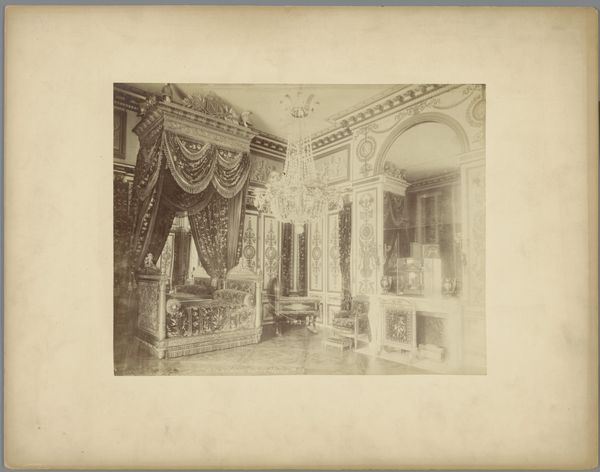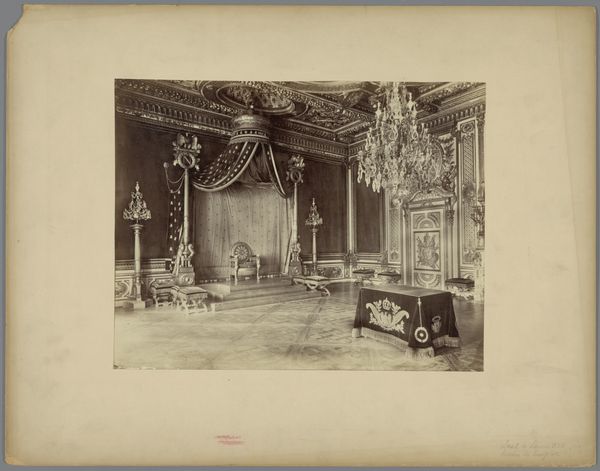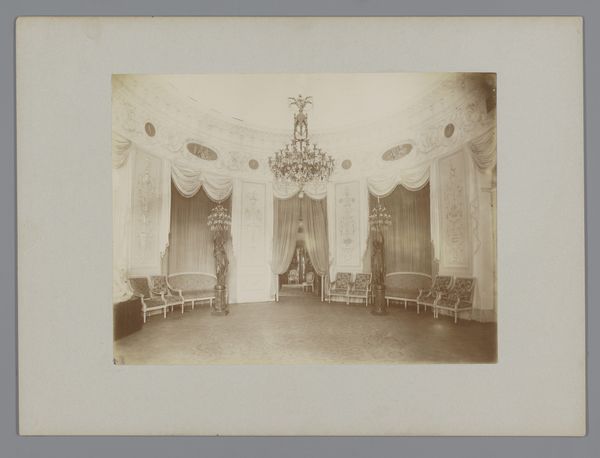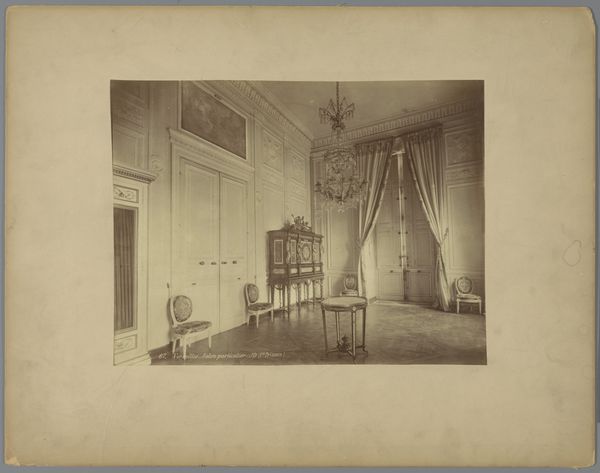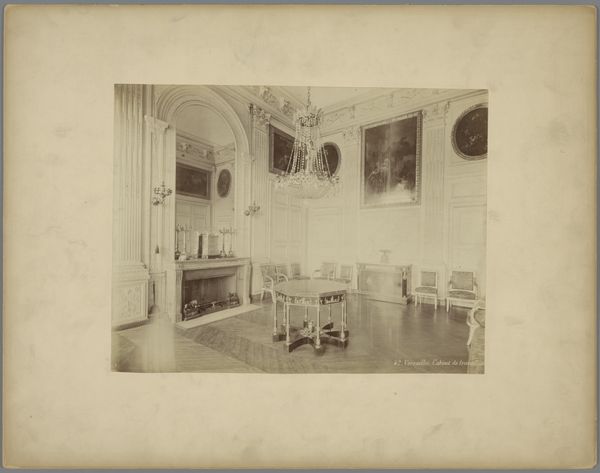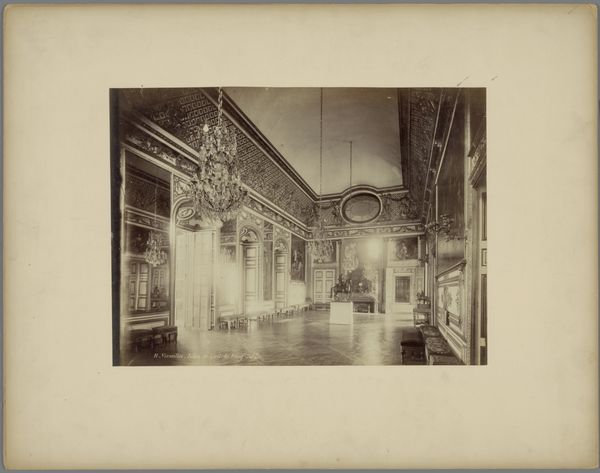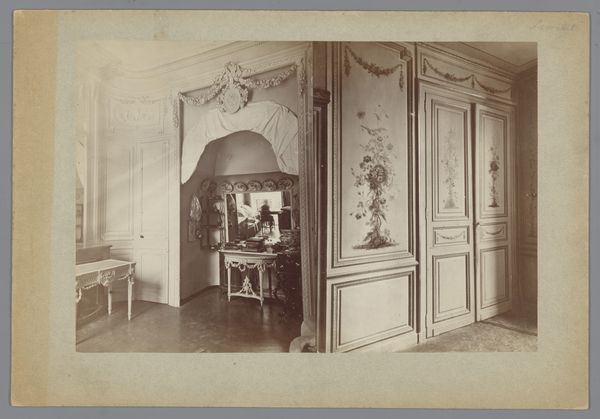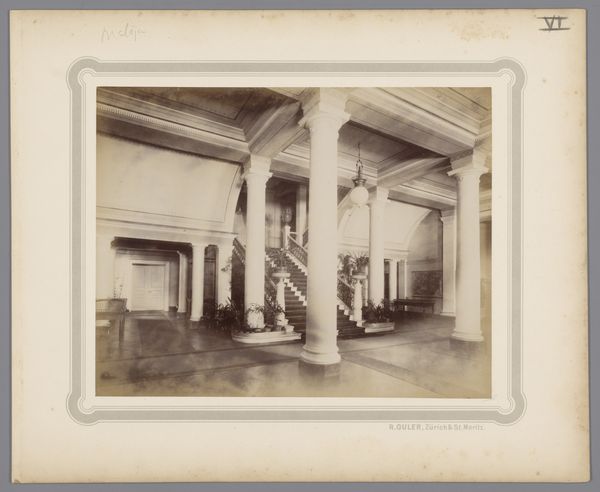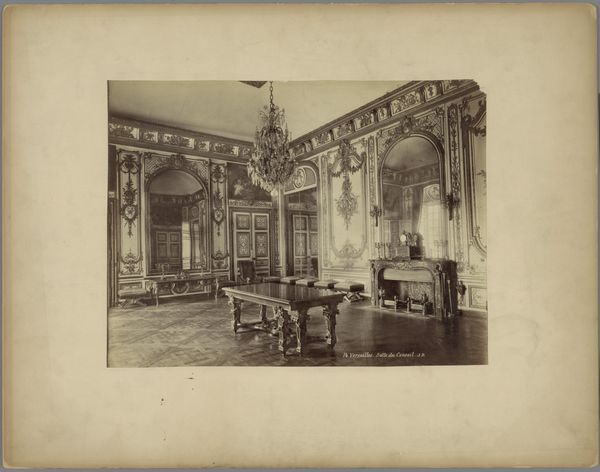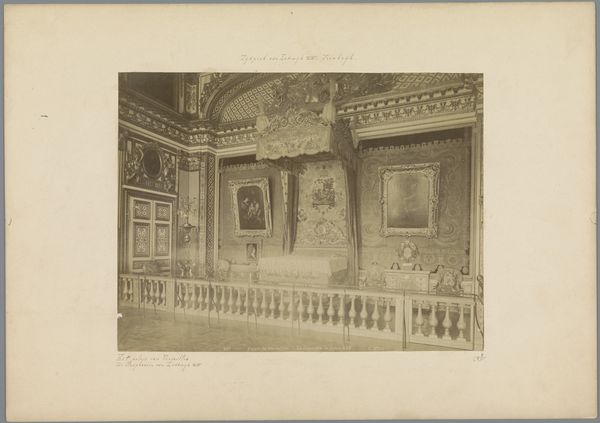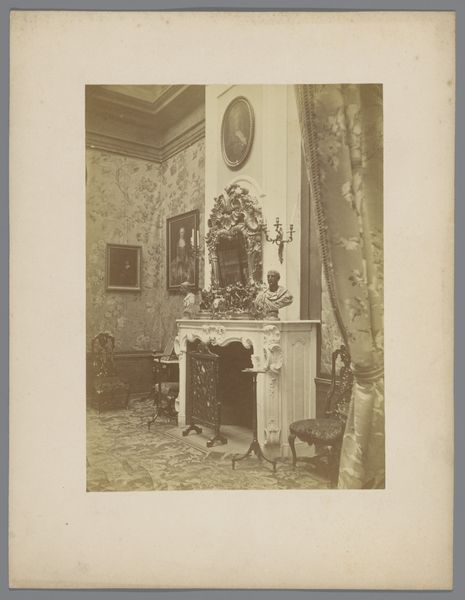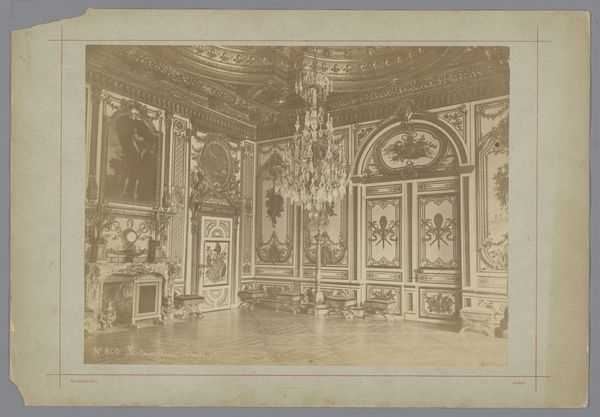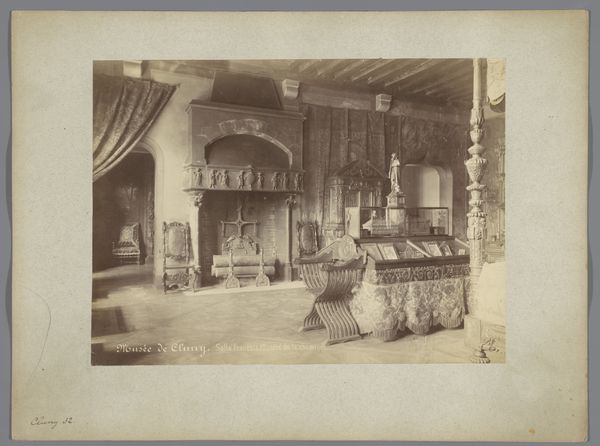
photography
#
landscape
#
photography
Dimensions: height 222 mm, width 290 mm
Copyright: Rijks Museum: Open Domain
Editor: This photograph, "Kamer van Anna van Oostenrijk in het Kasteel van Fontainebleau," dates back to between 1875 and 1900. The artist is unknown. The medium is photography, offering us a view into what was once a private chamber. It's incredible to see how photography can capture the ornate detailing. What draws your eye within this composition? Curator: The formal qualities of the photograph strike me first. Observe the photographer's masterful use of light and shadow to articulate the spatial relationships. The gradation of tone across the parquet floor, the crisp delineation of the architectural molding against the diffused illumination of the far wall. How does this contrast guide your eye through the image? Editor: I see it now! The dark drapes draw your gaze immediately, then the light floor leads you toward the fireplace. I also see how the geometric patterns, like the squares in the chairs versus the lines in the floor, create a rhythm. Curator: Precisely. Note also the strategic placement of the chandelier – it acts as a central node, a point of both illumination and structural balance within the composition. Its form, cascading and elaborate, offers a visual counterpoint to the linear severity of the walls. Editor: So it is like a focal point pulling all elements of geometry, form, and light together. Curator: Indeed, this photograph utilizes formal devices—balance, contrast, rhythm—to convey a sense of structured elegance and, perhaps, a bygone era's attention to decorative detail. The photographer's choices elevate the document into a careful study of interior design. Editor: I never thought I'd consider geometry to be such a central element in analyzing a photograph! I guess close examination pays off! Curator: Indeed. Formal analysis allows us to understand the intentions behind the photograph's composition and construction.
Comments
No comments
Be the first to comment and join the conversation on the ultimate creative platform.
